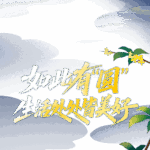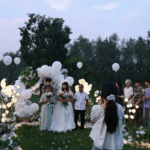Original Title: One Water, One Strategy: 3.05 Million Square Meters of Black and Odorous Water Bodies “Revived”
Chongqing Explores New Paths for Rural Sewage Treatment in Mountainous Areas, Benefiting 822,000 People
During the End of Heat season, in Tuan Shi Village, Fuguo Town, Tongliang, the Jiuyuan River meanders, with several egrets flying over the water.
The section of the Jiuyuan River in Tuan Shi Village was once identified as one of the rural black and odorous water bodies in Tongliang. After actions to control non-point source pollution from agriculture along the riverbanks and cleaning up debris accumulation in the water, the Jiuyuan River has regained its clear water and green banks.
There are many similar examples.
Chongqing has targeted rivers, ponds, ditches, and reservoirs covering more than 200 square meters in rural areas, as well as small water bodies near homes that have drawn strong reactions, establishing a comprehensive “one water, one strategy” problem list. Tailored strategies for treating rural black and odorous water bodies have been implemented, focusing on “source interception and pollution control, ecological treatment during the process, and comprehensive utilization at the end.”
By June 2025, Chongqing had completed the dynamic elimination of all rural black and odorous water bodies ahead of schedule. Leveraging the improved water environments, various districts and counties in Chongqing have developed leisure and tourism attractions, attracting many tourists for weekend and holiday visits to rural areas, increasing villagers’ income, and transforming ecological benefits into economic gains.
“One Water, One Strategy” Completes Treatment of 3.05 Million Square Meters of Rural Black and Odorous Water Bodies
Also in Tongliang, the Kujing Shanping Pond in Sanduo Village, Fuguo Town, was once a black and odorous water body.
“It used to bubble up and stink terribly in the summer,” said a villager living by the pond. Villagers dared not use the water for irrigation, and poultry that drank from it would get sick.
After on-site investigation, it was found that the Kujing Shanping Pond was adjacent to farmland, heavily affected by agricultural non-point source pollution, and lacked a water source for replenishment, leaving the water body with almost no self-purification capacity.
“We adhered to the ‘one water, one strategy’ approach, analyzing the main causes of pollution for each identified water body and developing treatment plans. Each town and street then implemented the treatments according to the plan and schedule,” explained a relevant official. For the Kujing Shanping Pond, Tongliang created an aquatic plant purification zone to form a buffer strip that filters and degrades agricultural non-point source pollution, serving as a protective barrier and enhancing the water body’s self-purification capacity, leading to gradually improving water quality.
In Yongchuan, the Shuihua Base by the Dazhu River in Weixinghu Street is a nationally renowned “freshwater fish fry” production base. “Yongchuan Shuihua” is a famous geographical trademark in Chongqing, with fish fry sales extending across various provinces and cities in China and to countries such as Russia, Afghanistan, and Pakistan, generating an annual output value of over 30 million yuan.
However, the Shuihua Base once faced the risk of shutdown.
“During the breeding process, farmers would add egg whites and feed to the ponds, and untreated aquaculture tailwater was directly discharged into the Dazhu River, causing eutrophication and reducing the water quality to below Grade V,” said a relevant official from Weixinghu Street Office. With the strong push for rural black and odorous water body treatment, the Shuihua Base was at risk of being shut down.
To preserve the Shuihua industry, Yongchuan fully implemented a “water ecological restoration + non-point source pollution control” project at the base.
“Through the treatment, not only has the Dazhu River become clean again, but the shutdown of the Shuihua Base was also avoided,” said a farmer at the base. Building on the black and odorous water treatment, farmers, guided by the government, developed “Xinghu Fry” aquaculture, extending the “Yongchuan Shuihua” industry chain and helping increase villagers’ income.
Currently, all 1,314 rural black and odorous water bodies, covering 3.05 million square meters that were dynamically identified and documented, have been treated, directly benefiting 822,000 rural residents.
Comprehensive Measures Create 3,379 Leading Villages in the Beautiful Bayu


